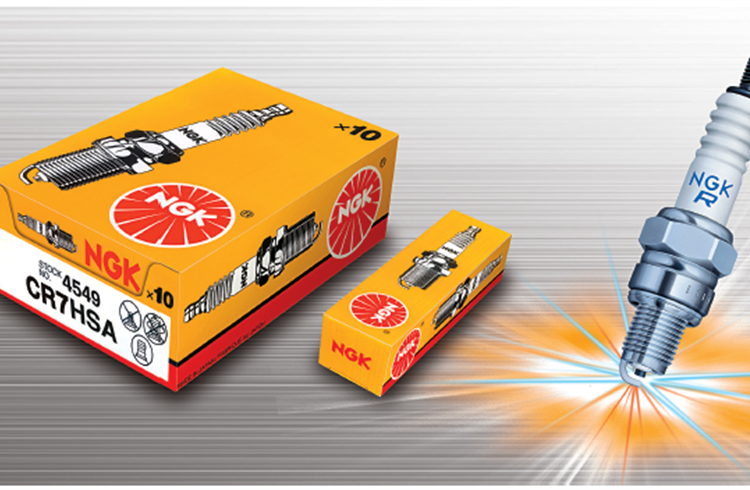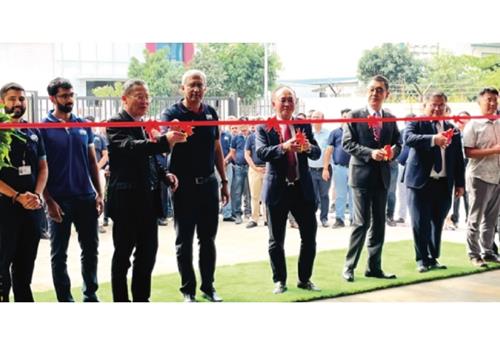NGK Spark Plugs targets 50% share of India aftermarket
Considering India is not a do-it-yourself market, NGK Spark Plugs India took it upon itself to educate the decision makers – the mechanics – on how to go about selecting the right spark plug for the right engine.
The leading Japanese manufacturer of spark plugs is bullish on growth in the Indian aftermarket and aims to double its business within the next three years.
Along with new products, creating lasting brand identity is key to success. And, in a market like India, that’s easier said than done. Japanese manufacturer NGK Spark Plugs India though has succeeded in doing so in a little over a decade.
When the company entered the Indian market in 2006, the spark plugs market was mainly driven by discounted-based trading and not so much by technology. Considering India is not a do-it-yourself market, NGK Spark Plugs India took it upon itself to educate the decision makers – the mechanics – on how to go about selecting the right spark plug for the right engine. Since then, the company went about judiciously creating product awareness and gradually established the NGK brand in the country.
NKG Spark Plugs India has its manufacturing plant in Bawal district in Haryana, with two assembly lines in place. The company, which sees its major business coming in from supplies of spark plugs (90%), glow plugs, and O2 sensors to major OEs and to the aftermarket space as well, is currently in a strong position with 25 percent of the total aftermarket volumes.
The company, which recorded net revenues of Rs 300 crore in FY2017, aims to further accelerate the growth momentum, which has been a strong 20-25 percent, since 2008. It is now aggressively working towards its goal of capturing 45-50 percent of the aftermarket business, which means it needs to grow at 25-30 percent until 2020.
CATERING TO HIGH-PERFORMANCE ENGINES
NGK Spark Plugs India imports major child parts of spark plugs, which include insulators and metals, from its global headquarters in Japan, and assembles these spark igniting components for two-wheeler and four-wheeler petrol engines, in its India plant, which deploys one semi-automatic and one fully-automatic assembly line.
While it started its India operations in mid-2007 by catering only to two-wheeler makers, it was not long before it ventured to supply to four-wheeler OEs by mid- 2008. The current volumes are equally distributed at 50:50 for both OE and the aftermarket business.

Apart from spark plugs, NGK Spark Plugs India has also been supplying glow plugs, solely to Maruti Suzuki, for its 1.3-litre Fiat-sourced DDiS diesel motor. The company has been refraining from expanding further into this area because unlike spark plugs, which are designed to universally fit various motors, glow plugs are bespoke for different engines, rendering them unique. According to Sudipto Sanyal, vice-president (Sales & Marketing), NGK Spark Plugs India, “The permutations and combinations, thus, would be too large to manage, for a midsize company of the present day, and hence, it has kept itself at bay."
NGK Spark Plugs India, which has been offering nickel, platinum and high-performance iridium plugs, has also been an inventor of high ignitability spark plugs, which it has been supplying to Maruti Suzuki, for application in its K-series range of 1.0-litre, 1.2-litre and 1.4-litre petrol engines. The highly efficient spark plugs also find application in engines from Honda Motorcycle & Scooter India, as well as India Yamaha Motor in their range of two-wheelers in the country.
According to Sanyal, these special spark plugs have been designed keeping the high performance demands of new-generation engines in mind, also providing 11 percent increase in the fuel efficiency of the vehicle.
QUALITY CONNECT
The company feels that the Indian market is a highly sensitive one, with the focus more on price rather than on product quality. As a result, the aftermarket is flooded with cheaper, sub-standard products, mostly originating from China, with more of a presence in the two-wheeler space (around 10-12 percent) than in four-wheelers (1 percent).
This is largely because of higher penetration of two-wheelers in rural and semi-urban areas, where customer awareness is still quite low and price of paramount importance. However, what augurs well for industry is that consumers are now opting for quality.
Sanyal believes that the new-age customer has evolved in his or her outlook towards vehicle maintenance, and doesn’t shy away from using high-quality – and likely more expensive products – in vehicles. In addition, today’s contemporary and high-on-technology engines also demand better quality products for optimum routine performance.
POPULAR MECHANICS
Given the fact that mechanics continue to be the brand ambassadors for parts like spark plugs in the aftermarket, NGK Spark Plugs India has been conducting a lot of training activities to teach the ‘vehicle doctors’ to use the best quality parts.
With its ‘Ustad Mechanic Club’ initiative, which commenced in 2012, the company has brought together a total of 500 members across India until now. This initiative sees NGK Spark Plugs India shortlist top mechanics from key cities each year. It brings them to its Bawal plant and provides thorough training about the working of IC engines. By imparting insight into the technical intricacies inside a modern-day petrol motor, the company instils in the mechanics the benefits of necessarily using genuine, high-quality products. The company aims to bring in 100 new ‘Ustad Mechanics’ into this practice every year.
Just like all aftermarket suppliers, the company has also been impacted by spurious parts in the Indian market. Nevertheless, NGK has been successful in cracking down, by conducting raids and taking trademarks and copyrights, since 2007, to bring the volumes of such parts to almost negligible levels.
The year 2015 saw discreet mushrooming of these spurious parts across the country. NGK Spark Plugs India is now tackling the situation through its extensive distribution channel; nearly 160 distributors, which serve 500 sub-distributors, collectively reach out to 25,000 retailers. According to Sanyal, while the OE space keeps evolving consistently, the government should set parameters for the small aftermarket players to also move up and quickly adopt newer technologies, making the older ones obsolete.
GEARING UP FOR THE BS VI ERA
An intricate component like a spark plug is of extreme importance when it comes to the evolution of emission norms. The high ignitability spark plug from NGK is a step in this direction, with continuous work still underway to bring in more efficient and suitable products, which would work in tandem with the upcoming BS VI engines from April 2020.
With most two-wheelers also requiring stepping up from the current carburettor setup to Fuel Injection (FI) systems with the advent of BS VI, NGK Spark Plugs India expects to see volumes of O2 sensors shooting up dramatically. Since it is fully prepared in terms of the technology, it plans to adopt a wait-and-watch strategy to assess the amount of localisation required in these parts, before it goes ahead and makes any fresh investments in its existing setup.
EVs AND THE AGE OF ZERO SPARK
With electric vehicles (EVs) gaining momentum, the inclusion of the green technology into the mainstream mobility sector is now not very far away. Government think-tank NITI Aayog in its recent report has recommended the country go full electric by 2032, aiming at no tailpipe emissions whatsoever.
Such a move would see NGK, a company fully dedicated to the manufacturing of spark plugs for IC engines, being impacted. But, according to Sanyal, “India is a vast landscape and EVs are still some 8-10 years away from becoming regular household terms. We would definitely look into prospective areas for the future, when the time arises. The focus at the moment is entirely on the immediate task, which is switching over to BS VI norms.”
(This article was first published in the July 1, 2017 print edition of Autocar Professional)
RELATED ARTICLES
Driving EV business with agility and flexibility
CEOs from the EV startup ecosystem met in Bengaluru and Pune to discuss the challenges and business opportunities.
BRANDED CONTENT: SM Auto and Gotech energy inaugurate their first battery pack assembly plant in Pune
Pune-based SM Auto Engineering (SMA), a leading automotive component system manufacturer and its partner Gotech Energy (...
Safer toys for India: Behind the scenes at Centy Toys’ factory
Autocar India explores the safety norms that govern the making of scale model cars at Centy Toys.





 15 Oct 2017
15 Oct 2017
 18446 Views
18446 Views





 Autocar Pro News Desk
Autocar Pro News Desk




